Article by Hannah Carroll Harris, studio photos by Jannik Abel // May 08, 2020
Kari Steihaug’s studio is one of seven to be found in a large, old brick building on an island five minutes by ferry from Oslo’s busy city centre—a place of creative refuge for local artists. Surrounded by idyllic rocky bays and green wooded expanse, it’s the perfect environment for Steihaug to ruminate on the collective history contained within the found objects she enlists as both material and subject matter for her textile-based practice. Flea-market finds, scavenged sea-glass and discarded knitwear all make their way into Steihaug’s large-scale installations, which are the accumulation of decades of collection, an inspection of the often forgotten or overlooked. We visited her in her studio via video to chat about tradition, history and the process of slowing down through fragments of the everyday.
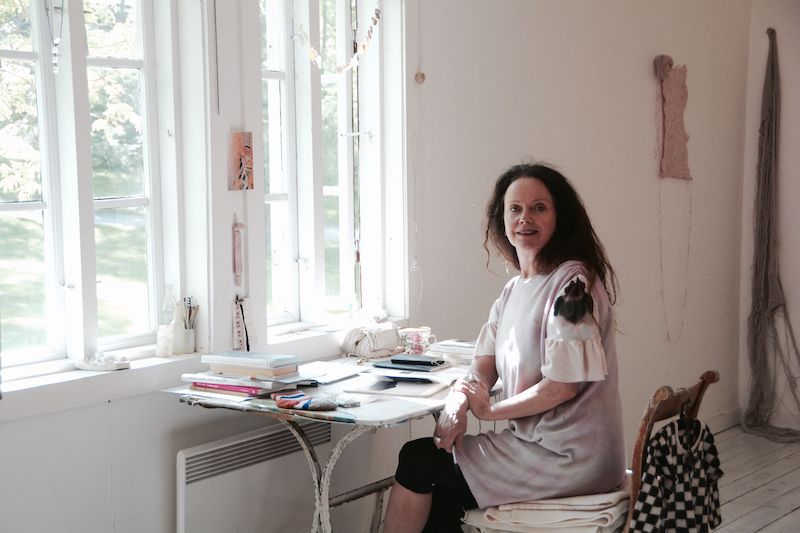
You can find knitted garments strewn around the bright, white second floor studio, ready to be assessed and categorised according to colour, or for their potential poetic use. Steihaug has had an ongoing call-out for unwanted items: now-threadbare favourites or knitting projects that were cast aside, never to be completed. These are the kinds of objects that are chosen for their inherent immovable qualities, their individual narratives that only their owner really knows. A sock that has been repeatedly darned or a beloved cardigan that’s been outgrown: these idiosyncrasies are what captivates Steihaug, who takes the fact of the object having been discarded as her point of departure. “I’m interested in time and I think that textiles carry time in a special way because these hand-knit clothes are in a way like layers of time,” she explains. “It takes a long time to make a pair of mittens and then a person uses them and uses them and you get holes and then maybe they mend it and use it again, and then they throw it away, and that’s my starting point.”
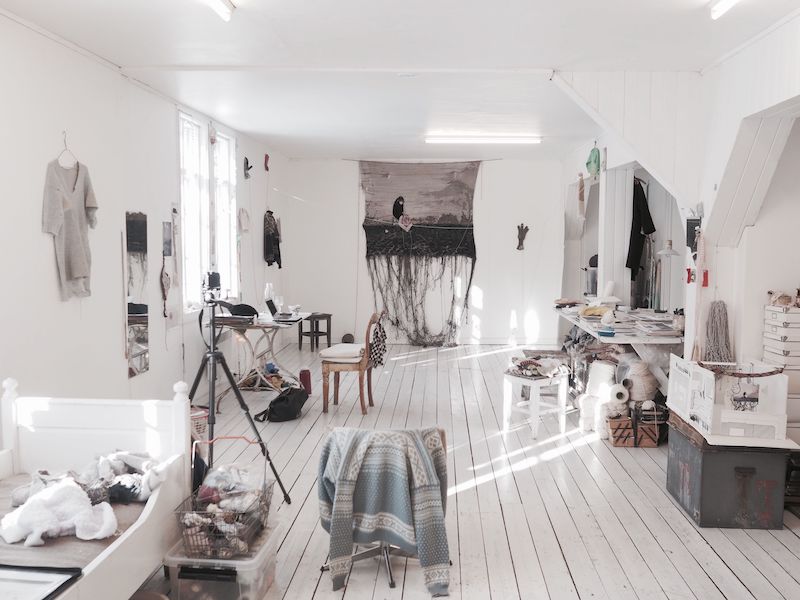
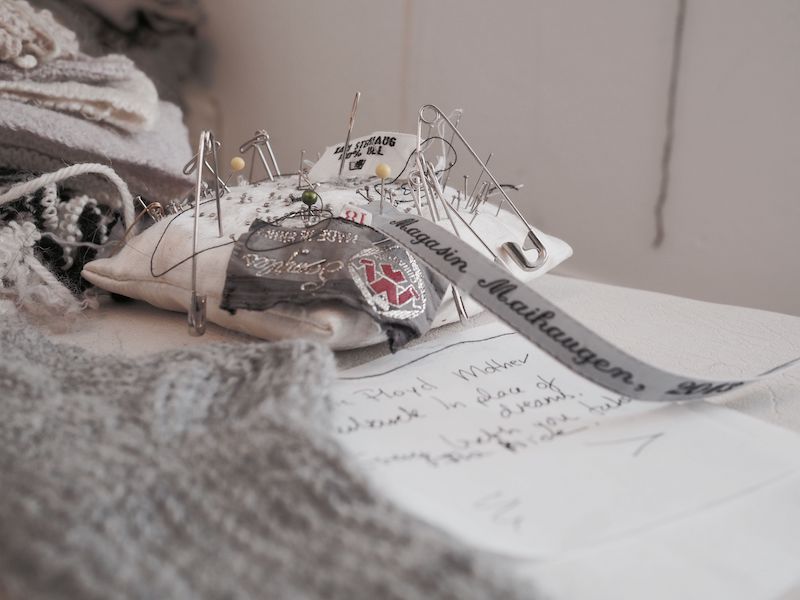
From here, the chosen garments make their way into a reworked woven portrait, or a sprawling installation, a mass of threads consisting of skeins of yarn from the repurposed garments. As Steihaug meticulously unravels them, a teasing out of their individual narratives is reassembled as a representation of collective histories and heritage. Coming from a family with a resonating connection to handcraft traditions, Steihaug had not initially considered that textiles would be a part of her chosen career. After focusing initially on graphic arts at art school, she completed an exchange program at Manchester Metropolitan University, where she found inspiration in the declining textile industry and factories of the city.
“When I found textiles, they opened up a big space for me because there are so many possibilities. You have the intimacy in the thread or the knitted clothes but you can also work really monumentally, so there is a huge space to how you can work,” she says. Whether working on a cumulative mass scale or a smaller, more personal one, there is a fluidity to Steihaug’s work, as she continues to test the possibilities of working with found materials. She will often revisit older pieces that haven’t yet found their way into an installation, unravelling and reworking them into new works.
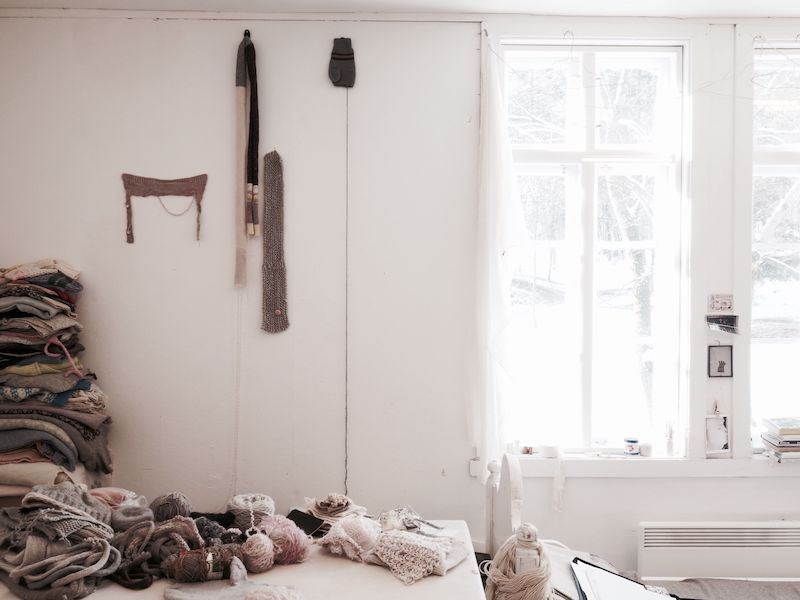
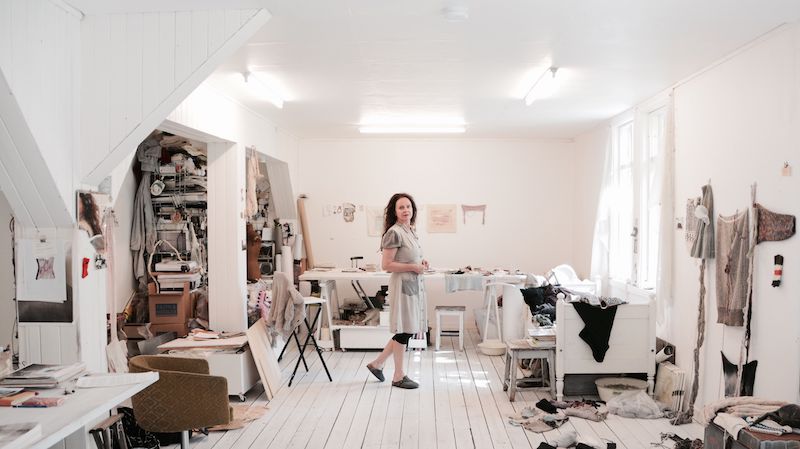
Over video, Steihaug takes me around the studio to show me the project she is currently working on. Piles of knitted clothing are folded and colour-coded according to her current palette, they will be unravelled and the threads used to create a woven carpet-like form. She shows me the tufting machine she uses to weave the thread in and out of her base material. It is a hand-held metal implement that takes the wool and swiftly pierces it in and out of the fabric, which Steihaug uses unconventionally on both the front and back of the material to essentially “draw” or “paint” with thread, slowly building up coloured lines and form.
The process of working in an almost two-dimensional form marks a departure for Steihaug, who usually incorporates the partly-unraveled garments into installations that show textile objects in various forms of flux and transition. Here, she creates landscapes with thread, images of everyday life as in ‘Rue de Fourly’ from the series ‘Does anyone know you are coming.’ Made while on residency in Paris, the woven works depict street-scenes and house entrances devoid of human presence, fragments of the everyday that reference that which is on the periphery. The work is currently in Berlin as part of the postponed exhibition ‘The White, the Green, and the Dark: Contemporary Positions from Norway,’ presented by the Royal Norwegian Embassy at the Felleshus of the Nordic Embassies. Steihaug also speaks about the piece in a video from her studio, which you can watch here.
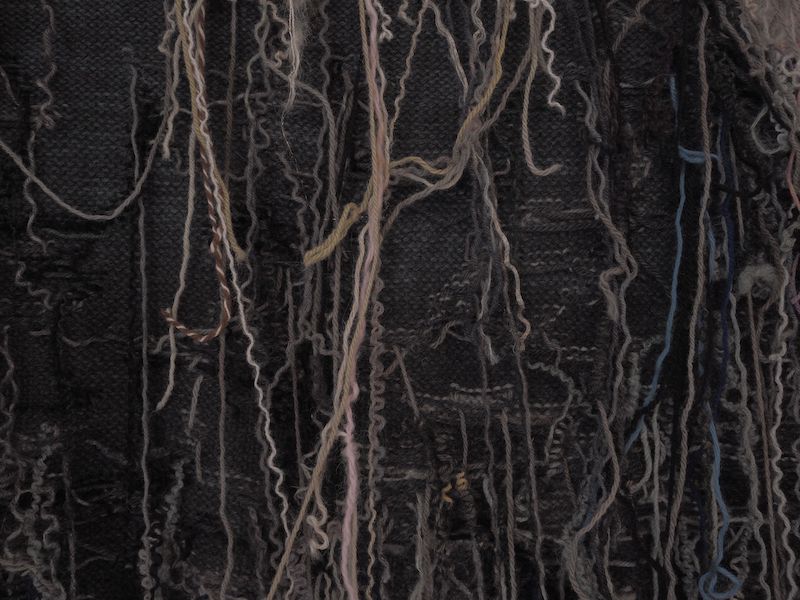
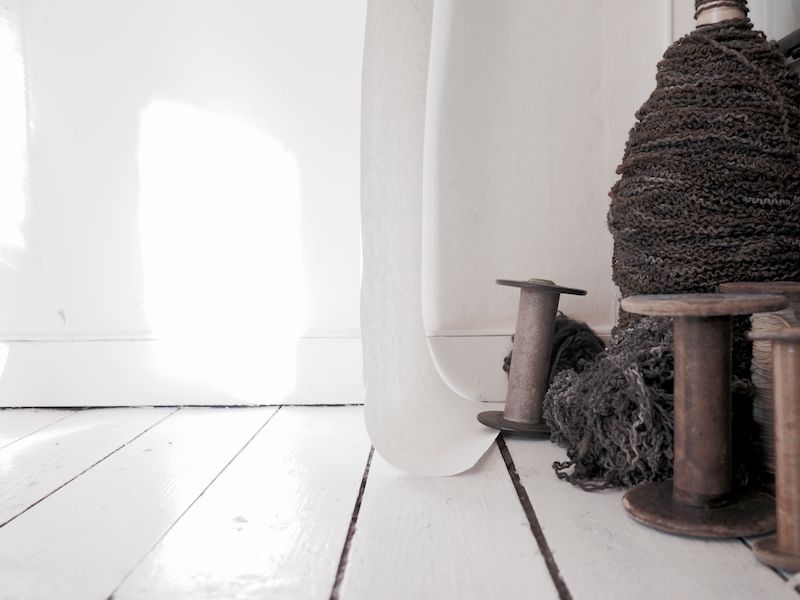
As we wrap up our conversation, Steihaug shows me the view of the surrounding island outside. We can see the city of Oslo over the water, which seems in stark contrast to the tranquil environment of the studio. Getting the full picture of her studio, I sense a real confluence of time, landscape and collective history in the same way in which people, place and personal narratives feed into the contemplative approach Steihaug takes through her practice of collection, re-making and re-connection. “Maybe it’s because I myself need a feeling of connection to history or where I come from or generations going before me, time is going quick so it’s a way of slowing down and telling myself that I am part of something long and big, of history. It’s so important for a sense of being in the world.”
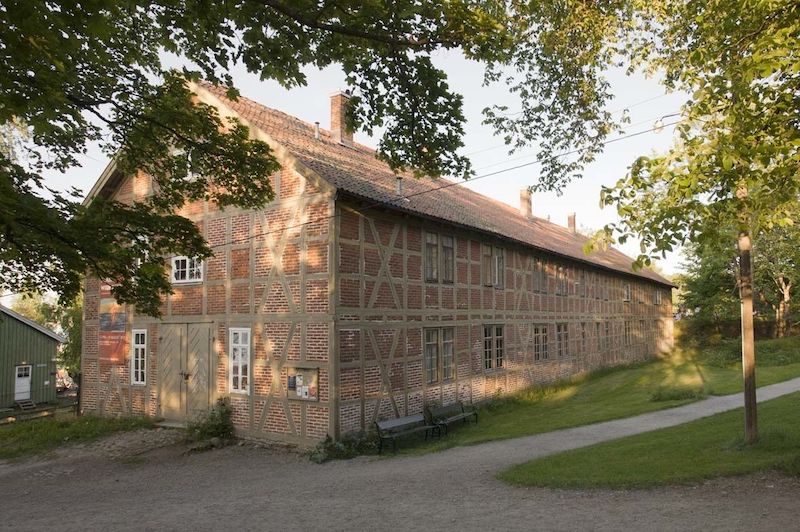
Courtesy of the artist
This article is a part of our Features’ topic ‘Landscape’ and is presented in collaboration with the Royal Norwegian Embassy in Berlin on the occasion of their exhibition ‘The White, the Green, and the Dark: Contemporary Positions from Norway,’ in which Kari Steihaug is a participating artist. The exhibition, curated by Sabine Schirdewahn, explores concepts of identity and home through intimate portrayals of the region’s landscape, both ecological and social, using a wide variety of media from sound and film to textile and sculptural works. A further emphasis of the contemporary works on display is the presentation of works by artists who belong to the Indigenous ethnic group of the Sámi. To read more from this topic, click here.
Artist Info
Exhibition Info
Royal Norwegian Embassy
Group Show: ‘The White, the Green, and the Dark: Contemporary Positions from Norway’
Exhibition: June 02–Oct. 03, 2020
nordischebotschaften.org
Fellehus, Nordic Embassies, Rauchstraße 1, 10787 Berlin, click here for map
























